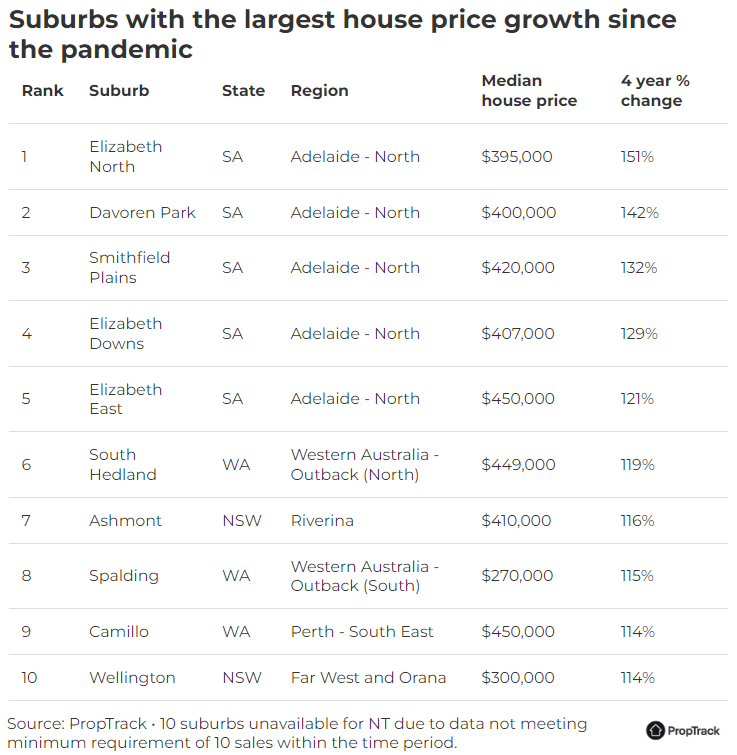Prices in some areas have more than doubled in the past four years

Property prices in nearly every Australian suburb are higher than they were four years ago, with the pandemic-fuelled boom and subsequent growth largely counteracting the negative impact of rising interest rates.
Data from PropTrack indicates that over the past four years, most suburbs have seen price growth significantly outpace that of the previous period.
Adelaide features prominently in the national top ten list, with house prices in Elizabeth North (up 151%), Davoren Park (up 142%) and Smithfield Plains (up 132%) more than doubling. Four years ago, houses in these areas typically sold for under £200,000.
In Perth, more affordable suburbs such as Camillo and Armadale have also seen substantial price increases, with properties that were priced around £200,000 four years ago now reaching between £400,000 and £500,000.

Similarly, regional areas across the states, especially Queensland’s coastal regions, have experienced significant price increases.
On the Sunshine Coast, house prices in Mount Coolum and Coolum Beach have increased by 113% and 100%, respectively, over the past four years, while in the Gold Coast, prices in Hope Island and Biggera Waters have nearly doubled.
In regional Victoria, towns like Warracknabeal, Terang, and Myrtleford have seen house prices surge by over 90%, with similar trends observed in several regional New South Wales towns, including Ashmont, Wellington, and Greta, all posting triple-digit growth rates.
Read more: Hot 100 suburbs for property investors
Anne Flaherty (pictured), economist at PropTrack, attributed the sharp rise in property prices during the height of the pandemic to a once-in-a-generation boom driven by exceptionally low borrowing costs and shifts in lifestyle preferences.
“The level at which property prices rose in 2021 in particular was the fastest episode of price growth seen in over 30 years,” she said. “It’s unsurprising that property prices increased when interest rates decreased so much.”
However, with interest rates now significantly higher than pre-pandemic levels and continuing to rise, the influence of borrowing costs on property prices has lessened amid a national housing shortage and strong population growth.
“We’re now in the reverse situation where not only have interest rates increased but they’re sitting well above pre-COVID levels,” Flaherty said. “Demand from buyers is exceeding the supply of properties for sale. That means the impact of interest rates is not as strong as it has been in the past.”
High borrowing costs have not deterred buyers from entering the market; instead, they have shifted consumer behaviour, driving demand and consequently increasing prices in regions where property is more affordably priced.
“With property prices sitting at record highs in many places, and with interest rates still incredibly high, more buyers are being priced out of a lot of different suburbs,” Flaherty said. “More buyers are looking to those more affordable areas, and that’s increasing demand.”
Want to be regularly updated with mortgage news and features? Get exclusive interviews, breaking news, and industry events in your inbox – subscribe to our FREE daily newsletter. You can also follow us on Facebook, X (formerly Twitter), and LinkedIn.



